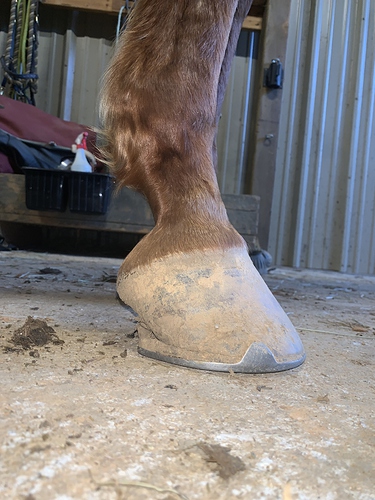I’m researching options for my problem child whose NPA seems extremely resistant to improvement.
Long story short, this horse has a lot going on… everywhere… but a good chunk of it could be attributed to his 0 or negative PA in the hinds. He tends toward NPA up front too (likely has it now, for reasons I’m working on correcting), but the fronts seem to be mostly correctable with good trimming. The hinds don’t want to come up, which is likely due to the body soreness that I’m also attempting to correct.
Wedges have been discussed for the hinds, the thought being “well at this point he’s either degenerating or we try wedges and manage the heels as best we can”. He’s had them before but couldn’t keep a shoe on to save his life - he would basically slide out of them or fling them over the pasture fence and halfway across the arena. X-rays over the course of years show almost no improvement despite multiple farrier attempts (with long enough with each pro to theoretically see something).
Boots and wedge pads are the next option, which would also allow frequent trimming.
Has anyone done hind wedges with success? Or wedges in boots? Wedges seem extremely divisive, some hate them and some think they can be a necessary evil. The key seems to be a proper trim (obviously), as slapping wedges on a crappy trim won’t fix a thing (BTDT). I’m looking at a multi-faceted approach with drugs + potential injections for the body issues, and plain boots at the least for the hoof issues.
(This is a horse that is retired, and can remain that way. But if he can comfortably work enough to build some muscle it would go a long way in supporting his body issues that are exacerbated by lack of strength).

 .
.
 . That’s why I’m looking at different options from my Cavallos - they’re soggy even after 12 hours. I have some friends IRL that successfully used Scoots for 23/7 wear, so I’m researching options similar to that design. The wedge discussion does complicate things.
. That’s why I’m looking at different options from my Cavallos - they’re soggy even after 12 hours. I have some friends IRL that successfully used Scoots for 23/7 wear, so I’m researching options similar to that design. The wedge discussion does complicate things.

 .
.
